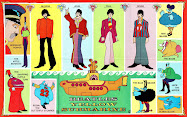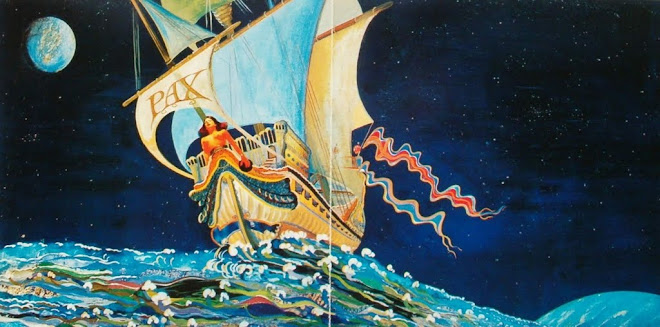By Cory Graves Thursday, Aug 5 2010 Dallas Observer
When retailers and critics began singing the praises of digital media—namely the newly en vogue compact discs in the mid-1980s—vinyl began its slow descent into the background, fading into virtual obscurity around 1991. Or so mainstream labels and retailers would have you believe.
Despite its dwindling availability, vinyl never stopped being manufactured. And it never completely vanished. Vinyl sales topped 1.9 million units nationwide in 2008, the most in any year since 1998, and rose another 33 percent in 2009 according to Nielsen SoundScan, the official source of sales records used by the music industry.
"Most days, we sell almost as much LPs, dollar-wise, as we do CDs—pretty shocking for 2010," says Chris Penn, part owner of Good Records on Lower Greenville. "My theory is that the exaggeration of the death of vinyl was a way for the music industry to push the two main formats they were hawking at the time: the compact disc and cassette."
The incipient resurgence that niche formats like vinyl, cassettes, and 8-track tapes are currently experiencing is not without merit. For vinyl, the revitalization makes sense. Its larger packaging better accommodates cover art, making them more aesthetically appealing to both consumers and collectors. And the sound quality is known for exhibiting a great deal more warmth than the format's digital counterparts. Plus, the very idea that records will have to be changed or flipped frequently leads to listening experiences that are more purposeful—more of something that's experienced, and appreciated on a higher level, and not as something simply relegated to the background.
"There is definitely a collector-nerd quality to it," Penn says. "But I don't think the resurgence would be sustained if people were not actually diving in and making listening to an album more of an 'event' type of situation—almost communal."
This is an idea that's catching on locally as well. In the past year, many local bands put out vinyl releases—most notable among those being the Teenage Cool Kids and their much-hyped Foreign Lands, an album that was made available exclusively on 180-gram vinyl.
And it's not just bands who are championing the once dying format; local labels are also partially responsible for vinyl's sudden chic. In March, the highly influential Dallas-based music blogs Gorilla vs Bear and Weekly Tape Deck combined forces to create Forest Family Records. The label has already released seven-inch singles by New York's Cults and Colorado's Gauntlet Hair. In each case, the releases received loads of national media attention, and the label subsequently sold out of their initial pressings very quickly. For the time being, Forest Family maintains the sentiment that all future releases by the label will come on vinyl, and perhaps an occasional cassette.
"It's the quality aspect of the vinyl format that we prefer over any other medium," says Forest Family co-founder Nathan Smith. "Even driving in my car, I'll plug in my iPod or a burned CD; it's rare that I even make a CD purchase anymore."
Although the reasons for vinyl's recent rebound seem reasonable enough, the rationale behind the growing demand for cassette tapes isn't quite as clear. While the superior artwork and sound quality of vinyl give plausibility to its increased popularity, those same elements are what makes the cassette's comeback equally perplexing. Album artwork suffers on the small sized, awkwardly shaped cassette tapes—and that's not even mentioning the diminished sound quality that comes with having to cram so many sounds onto such a small strip of magnetic tape, and one which only degrades with each listen.
"With cassettes, you have all these sounds compressed onto a piece of 1/8-inch magnetic tape, says Teenage Cool Kids guitarist Andrew Savage. "The more sound you try to jam on there, the more you have to compete with tape hiss."
While it might not be for their aesthetic, several reasons exist for the renewed interest in cassettes. For one thing, they represent a bit of nostalgia for children who grew up in the 1980s. Now aged in their late 20s and early 30s, for these listeners, it's about re-creating a sentimental experience, listening to the format that reminds them of some of their earliest exposure to music.
"The whole cassette thing coming back seems like pure novelty to me," says Good Records' Penn. "I know there are some great cassette-only labels popping up, [but] it's really not convenient, as most cars are not equipped with cassette decks anymore, nor are home stereo systems."
On a more social level, however, cassette's revitalization is based on cultural implications that, in some circles, are more important than how the end product looks or sounds. Tapes are the modern-day embodiment of the underground DIY ethic that was so prevalent in the 1980s and early 1990s, and led to the success of bands like Sonic Youth.
Cassettes are one of the cheapest and easiest formats to create and reproduce, which enables artists with a wide variance in skill sets the ability to record. As such, sound qualities can vary from mediocre to downright excruciating. But very few artists see large profits from cassette-only releases, or even intend to for that matter.
Happy New Year - Abba
1 day ago









.jpg)



No comments:
Post a Comment